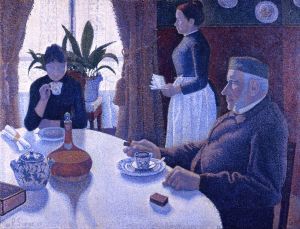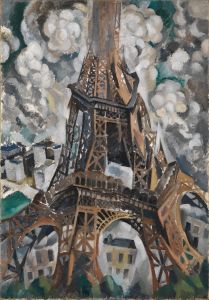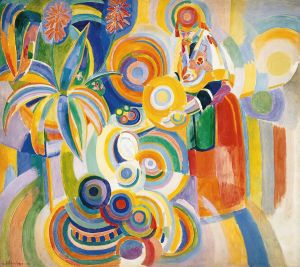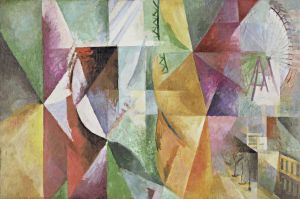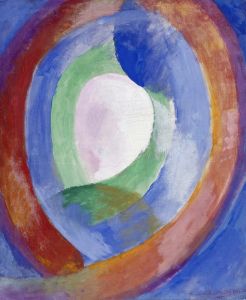
Étude pour ‘L’Équipe de Cardiff’
A hand-painted replica of Robert Delaunay’s masterpiece Étude pour ‘L’Équipe de Cardiff’, meticulously crafted by professional artists to capture the true essence of the original. Each piece is created with museum-quality canvas and rare mineral pigments, carefully painted by experienced artists with delicate brushstrokes and rich, layered colors to perfectly recreate the texture of the original artwork. Unlike machine-printed reproductions, this hand-painted version brings the painting to life, infused with the artist’s emotions and skill in every stroke. Whether for personal collection or home decoration, it instantly elevates the artistic atmosphere of any space.
Étude pour ‘L’Équipe de Cardiff’ is a notable work by the French artist Robert Delaunay, a prominent figure in the early 20th-century art movement known as Orphism. This movement is characterized by its use of vibrant colors and abstract forms, aiming to convey a sense of rhythm and movement. Delaunay, along with his wife Sonia Delaunay, was instrumental in developing this style, which sought to synthesize the color theories of the Impressionists with the structural concerns of Cubism.
The painting Étude pour ‘L’Équipe de Cardiff’ is a study for a larger work titled L’Équipe de Cardiff, which translates to "The Cardiff Team." This series of works was inspired by Delaunay's fascination with modernity and the dynamic energy of contemporary life, particularly as expressed through sports and urban scenes. The Cardiff Team refers to a rugby team, and the painting captures the essence of movement and speed associated with the sport.
Delaunay's approach in this study reflects his interest in the interplay of color and form. He employs a vibrant palette and dynamic composition to create a sense of motion and excitement. The use of circular forms and intersecting lines is characteristic of his style during this period, emphasizing the idea of simultaneity and the interconnectedness of different elements within the painting. This technique allows the viewer to experience multiple perspectives and moments in time simultaneously, a concept that was innovative and influential in the development of abstract art.
The painting is also notable for its reflection of Delaunay's interest in the technological advancements of his time. The early 20th century was a period of rapid industrialization and technological progress, and Delaunay was fascinated by the ways in which these changes were transforming society. His work often incorporates elements of modern life, such as airplanes, the Eiffel Tower, and sports, as symbols of the new, dynamic world emerging around him.
Étude pour ‘L’Équipe de Cardiff’ exemplifies Delaunay's belief in the power of color to evoke emotion and convey meaning. He was deeply influenced by the color theories of Michel-Eugène Chevreul and the writings of Paul Signac, which emphasized the optical effects of juxtaposing complementary colors. In this study, Delaunay uses bold contrasts and harmonious color relationships to create a vibrant, pulsating effect that draws the viewer into the scene.
This work is an important example of Delaunay's contribution to the development of abstract art and his exploration of the relationship between color, form, and movement. It reflects his commitment to capturing the spirit of modernity and his belief in the transformative power of art. Through his innovative use of color and form, Delaunay sought to create a new visual language that could express the complexities and dynamism of the modern world.
Étude pour ‘L’Équipe de Cardiff’ remains a significant piece within Delaunay's oeuvre and continues to be studied and appreciated for its artistic and historical significance. It is a testament to Delaunay's vision and his role in shaping the trajectory of modern art in the early 20th century.





